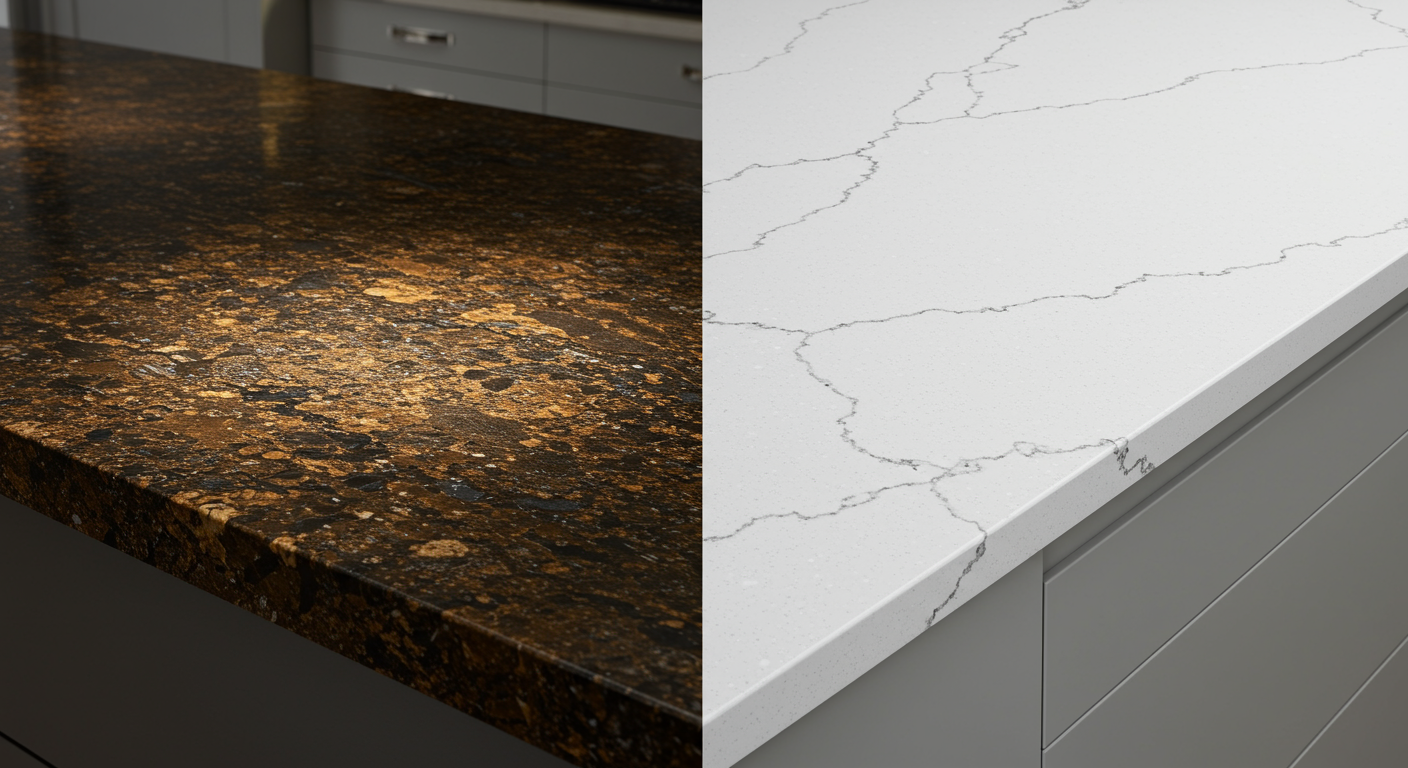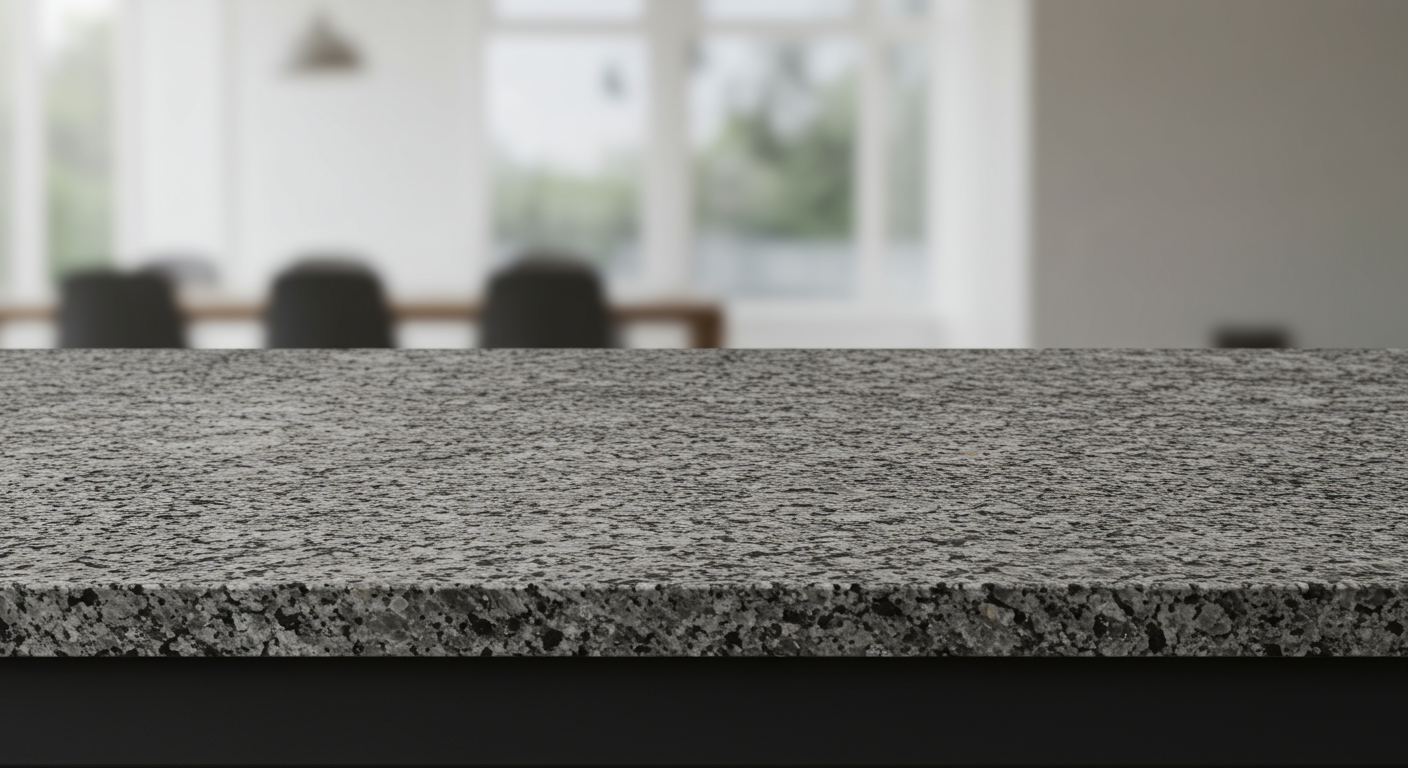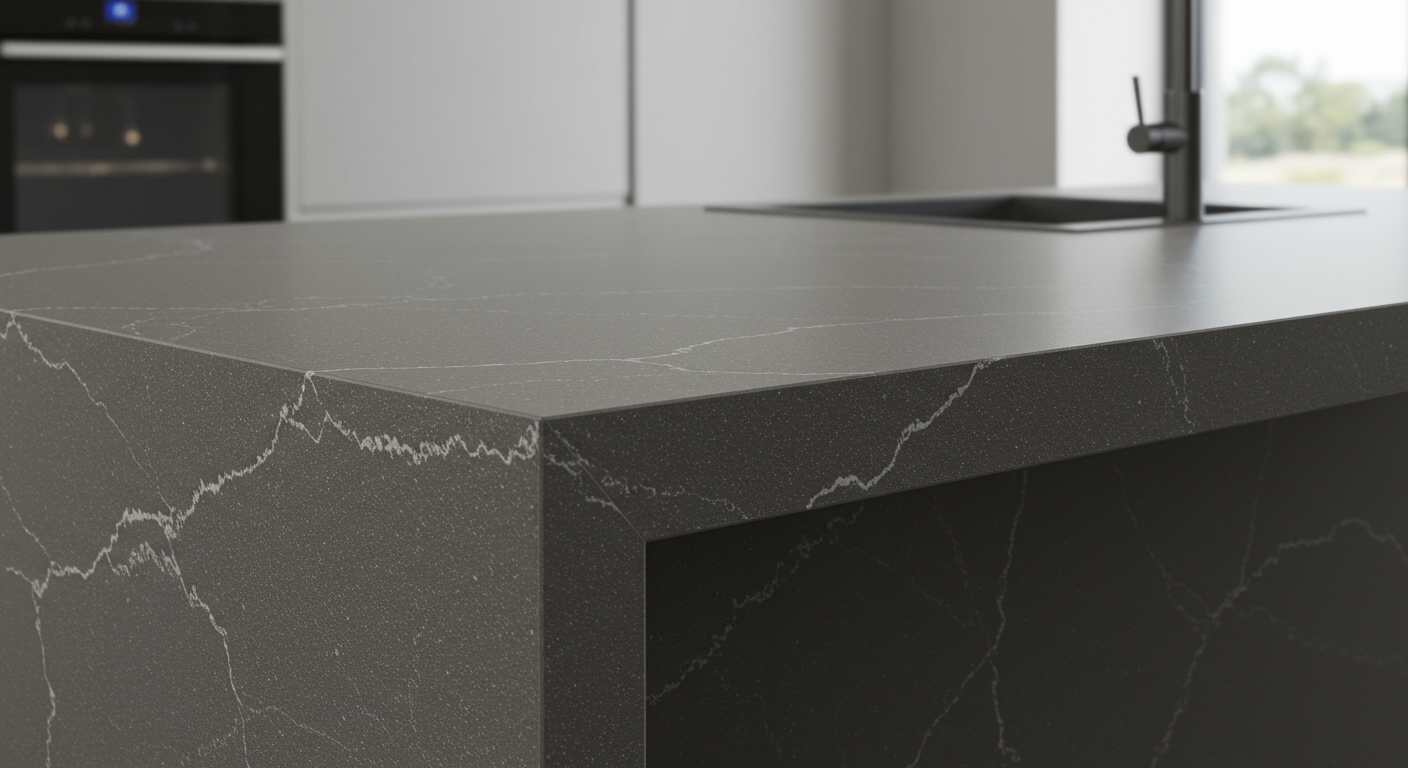
Upgrading your kitchen or bath? Your choice of countertops will shape how the space looks, wears, and cleans day to day. Granite and quartz are the heavy hitters—both beautiful and durable, but with different strengths. Here’s a clear, human breakdown so you can pick what fits your life, not just the showroom.
Granite at a Glance

A 100% natural stone cut from the earth—every slab is one of a kind. If you love organic movement and variation, granite delivers.
Pros:
- Truly unique patterns and veining—no two slabs match
- Excellent heat resistance
- Naturally hard and scratch‑resistant
Truly unique patterns and veining—no two slabs match
Excellent heat resistance
Naturally hard and scratch‑resistant
Cons:
- Porous—needs periodic sealing to resist stains
- Pattern variation can make seams and matches more noticeable
- Spills should be wiped promptly to avoid absorption
Porous—needs periodic sealing to resist stains
Pattern variation can make seams and matches more noticeable
Spills should be wiped promptly to avoid absorption
Quartz at a Glance

An engineered surface made from ground quartz, resins, and pigments. Designed for consistency and easy care.
Pros:
- Non‑porous—no sealing, highly stain‑resistant and hygienic
- Very low maintenance—soap and water usually do it
- Wide, consistent color/pattern range, including marble‑look
Non‑porous—no sealing, highly stain‑resistant and hygienic
Very low maintenance—soap and water usually do it
Wide, consistent color/pattern range, including marble‑look
Cons:
- Less tolerant of high heat—use trivets for hot pans
- Some colors can fade with prolonged UV exposure
- Uniformity may feel less “natural” if you crave variation
Less tolerant of high heat—use trivets for hot pans
Some colors can fade with prolonged UV exposure
Uniformity may feel less “natural” if you crave variation
Head‑to‑Head: What Really Matters
Appearance
- Granite: Organic, one‑of‑a‑kind movement and depth
- Quartz: Predictable, dialed‑in looks from solid to stone‑mimic
Granite: Organic, one‑of‑a‑kind movement and depth
Quartz: Predictable, dialed‑in looks from solid to stone‑mimic
Maintenance
- Granite: Seal periodically; wipe spills quickly
- Quartz: No sealing; easy daily cleanup
Granite: Seal periodically; wipe spills quickly
Quartz: No sealing; easy daily cleanup
Durability
- Granite: Tough and heat‑hardy; edges can chip if struck
- Quartz: Tough and chip‑resistant; avoid extreme heat
Granite: Tough and heat‑hardy; edges can chip if struck
Quartz: Tough and chip‑resistant; avoid extreme heat
Seams
- Granite: More visible with bold movement
- Quartz: Often less noticeable due to pattern consistency
Granite: More visible with bold movement
Quartz: Often less noticeable due to pattern consistency
Cost
- Often comparable; both span entry to luxury. Final price hinges on color rarity (granite), brand/design (quartz), and layout complexity.
Often comparable; both span entry to luxury. Final price hinges on color rarity (granite), brand/design (quartz), and layout complexity.
Design Fit: Where Each Shines
Choose granite if you want a natural showpiece with movement that anchors the room, especially with simpler cabinets and classic palettes.
Choose quartz if you want clean, consistent lines, modern aesthetics, or a marble look without the marble maintenance.
Everyday Living: How They Feel To Use
Cooks and bakers who set down warm pots or sheet pans may favor granite’s heat tolerance (still use trivets to be safe).
Busy households that want wipe‑and‑go care—and fewer worries about pasta night—tend to love quartz’s non‑porous surface.
Sustainability Snapshot
Granite: Natural material quarried and transported; durability gives it a long life.
Quartz: Manufactured product; many brands use recycled content and efficient plants. Both can be responsible choices depending on source and lifespan.
How to Choose (Simple Framework)
If you want unique, organic character and don’t mind light maintenance, pick granite.
If you want fuss‑free care, consistent looks, and strong stain resistance, pick quartz.
Still torn? Visit a slab yard. Seeing full‑size slabs (not just samples) often makes the decision obvious.
Conclusion
There’s no absolute “winner”—just the countertops that fit your style and routine. Granite brings natural drama and heat resilience; quartz brings effortless care and laser‑precise design control. Weigh what matters most in your kitchen or bath, run your hand across a few slabs, and choose the surface you’ll be happy to live with every day.


